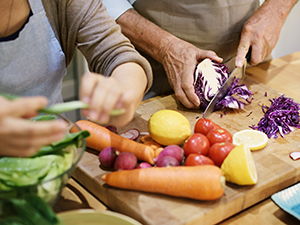
If you're looking for the best ways to cook for kids, look no further than your kitchen. Your cooking skills will be a valuable teaching tool for your kids. They will not only be able explore new recipes, but they'll also learn to communicate in a foreign language and increase their self-confidence. Find out how to cook for your kids by reading on! These are some ideas to help them get started. Here are some tips to get kids cooking in the Kitchen.
Get your kids involved in the kitchen
Getting children involved in cooking can help them develop a love of food, while also improving their math and reading skills. Even though young children won't be interested in cooking as a hobby, they can learn how to make mash and peel vegetables. Once they get older, they can use more tools and practice age-appropriate math and reading while cooking. It's a great way to get your kids involved in cooking and can even help them learn how to make their own meals!
Encourage them to taste new ingredients
It may seem tempting to keep food hidden from your children. But this can make them avoid trying new foods and ingredients. Make it as easy as possible to cook for children. Start by using your senses other than taste when introducing new ingredients and foods. Doing so can help create recognizable associations between new foods and flavors. Try using your hands when kneading dough, rinsing vegetables, or grating cheese. If you allow your children to taste the various textures and flavors of different ingredients, they will be more inclined to try them.

Building self-confidence
Cooking for children is a great way of teaching responsibility and self-confidence. This activity can also help them develop their language skills and math skills. They will also gain pride in being able to prepare meals that are shared with the entire family. As well as learning valuable cooking skills, children can learn to chop and stir, pour, spread, knead, and even spread.
Developing language skills
Cooking with children is a great way to share the many benefits. Aside from the health benefits, they also help develop language skills. The truth is that children learn more from talking to their parents. Therefore, it's a great idea for all the family to share a meal together while you cook. Here are some benefits of cooking with your children. To improve your child’s language skills, you might teach them how to make their recipes.
Get them to read and understand the labels on food
Although it can be challenging to teach children how to read food labels, there are many benefits to teaching them. Starting with teaching your children how labels are read for nutrition and serving sizes is a good place to start. You can then go on to discuss the importance of choosing healthy nutrients. You can introduce each step slowly, one at time. You can think of each step as a building block for teaching kids how to read labels. It's time for the next step.

FAQ
What are my options for learning about cooking?
There are many cooking classes available all over the country. There are many schools that offer courses in pastry, baking, and wine tasting. You can learn more about how to cook by enrolling in a class at either a local vocational school or community college.
How do you become a chef?
There are many options for becoming a chef. To start, you can take a course at your local community college. You might also consider going to culinary school. A paid internship is another option.
Where can I find online cooking classes for free?
Many websites offer free cooking classes. YouTube offers many videos on how to cook various meals. You may have access to thousands upon thousands of recipes on some websites. You will need to pay a monthly subscription, but you can still try the site for free for 30 day.
Is there a difference between a chef and a cook?
A chef cooks for others. A cook cooks for others. A chef, on the other hand, works directly with customers. This means that they can have to decide what food to serve customers based their preferences. A cook does not interact with customers. Instead, a cook makes sure the food tastes good before delivering it to customers.
How long does it take to learn to cook? How long will it take me to learn how?
It depends on the skill level. Some people can learn basic cooking techniques in as little as a week. Others may take months or years to master the basics of cooking.
The person who is learning to cook can vary in the amount of time they need. A person who has never cooked before will likely need more time to learn than someone who is a regular cook. Different types of cooking require different amounts of experience. Baking requires more knowledge than frying.
Learn a technique to increase your ability to cook quickly. Once you have perfected that technique, you can move on. Don't worry too much about the exact number of days or weeks it takes to learn to cook. Just keep practicing and enjoy the process.
How can I be motivated to cook?
Sharing meals with family and friends is the best part of cooking. Cooking for your own family is much easier than making meals for others. Try something new if you want to feel motivated to cook. This way, you will learn about new ingredients and techniques. You can also use recipes from other cultures to increase your culinary knowledge.
How much does it cost to study Culinary Arts?
The price of studying culinary arts varies widely. For example, a 4-year degree costs about $40,000. A two-year associate degree, on the other hand may cost less than $5,000. The type of program you choose will determine the tuition rates. The tuition rates for private institutions are usually higher than those of public universities.
Statistics
- You'll be amazed that over 90% of CIA students receive scholarships and grants to finish their culinary studies. (ischoolconnect.com)
- In the United States, the category is estimated at $23.2 billion annually and is growing faster than the market. (washingtonpost.com)
- The median pay for a chef or head cook is $53,380 per year or $25.66/hour, according to the U.S. Bureau of Labor Statistics (BLS). (learnhowtobecome.org)
External Links
How To
How to make the perfect omelet
Omelets have always been a favourite food to eat for breakfast. But how do they turn out so perfectly? I have tried many different recipes and methods, but none of them work. Today, I'd like to share some tips with you in order to make delicious and fluffy omelets every day.
It is important to know that eggs can be temperamental when making omelets. They must be fresh, preferably from the organic market, and be kept cold until cooking. They must be kept cool, otherwise the whites will not form properly and the yolks may become runny. This will make your omelets appear strangely colored. If you're going to cook them immediately, it is best if the eggs are still warm.
Another tip is to separate each egg before adding them to the saucepan. The yolk and white should not be mixed together as this can cause the omelet's curdle.
The egg can burn if it is placed directly on the stovetop. Instead, put the egg in the microwave for 10 seconds before putting it into the pan. The microwave heat will cook the egg just right without making it too hot.
Let's now talk about mixing eggs. When mixing eggs, it is important to thoroughly beat them. To do this, grab the bowl of the mixer and turn it upside down. Now shake the bowl vigorously. This will whip the air around the bowl and mix the egg well.
Now comes the fun part: adding the milk to your mixture. Mix half of the milk with the eggs. Then fold the eggs in half into the remaining milk. You don't need to worry if streaks remain. They will disappear once you flip your omelet.
After folding the eggs fold the pan onto medium heat. When the oil starts to hot, wait for the pan to cook. Add 1/4 cup butter to the oil and swirl it around to coat all sides of the pan. Open the lid and sprinkle salt on the pan. A pinch of salt will help prevent the omelet from sticking to the pan.
Once the omelet forms, cover the pan again. Let the top side set completely. Flip the omelet upside down or with a spatula. Cook the second side for a minute or so. Serve the omelet immediately by removing it from the pan.
This recipe works best with whole milk, but skimmed milk also works.